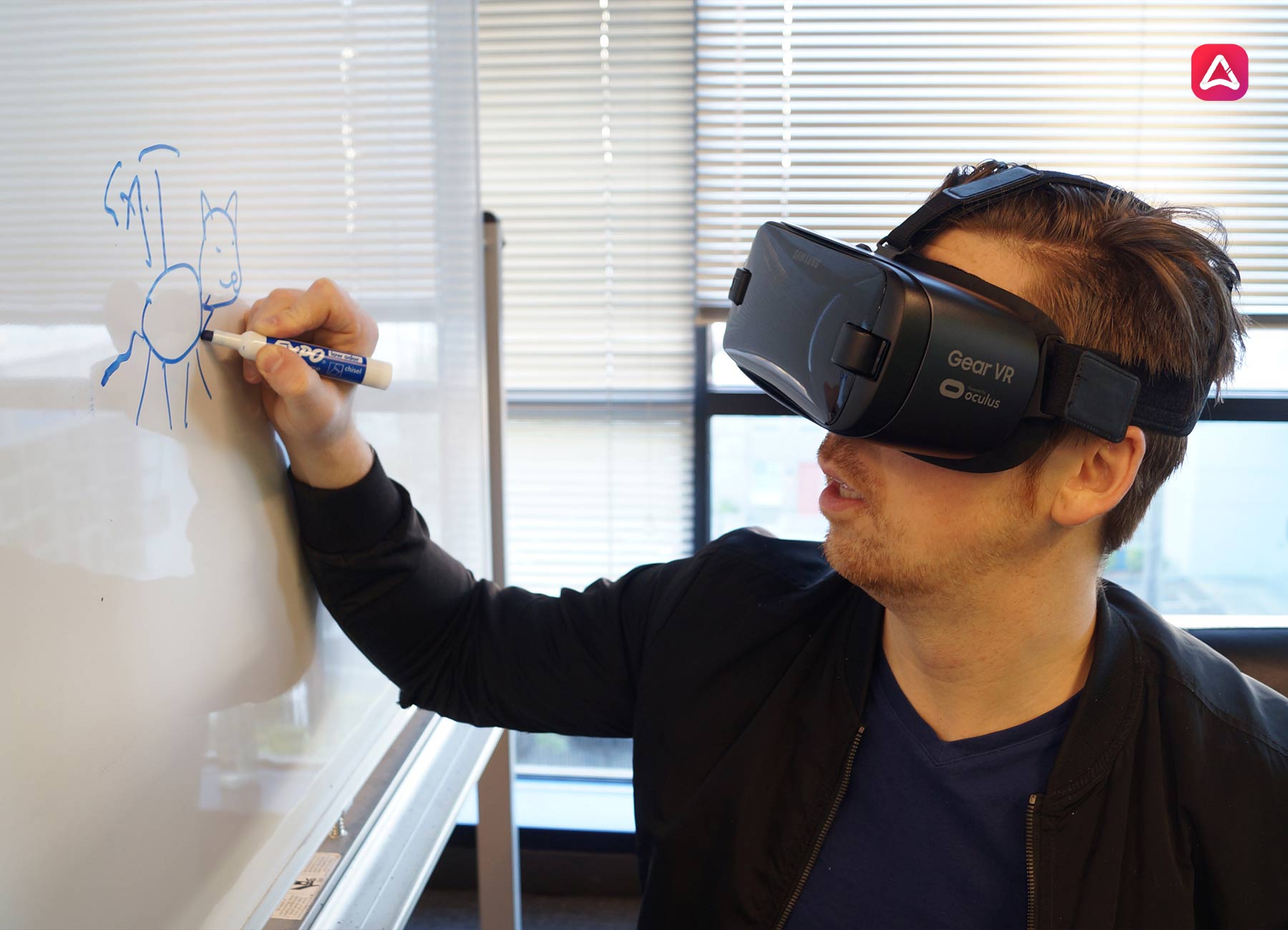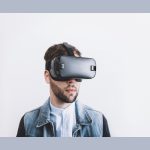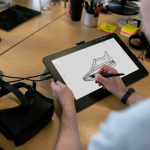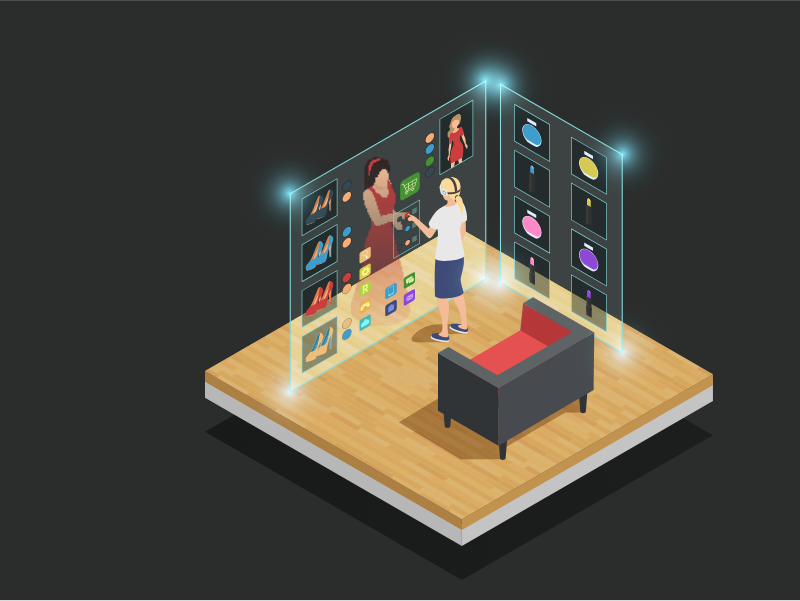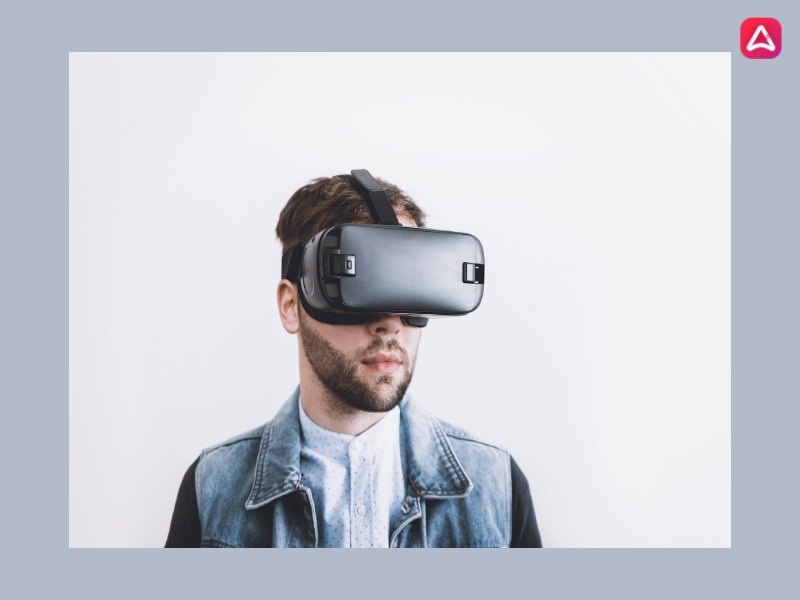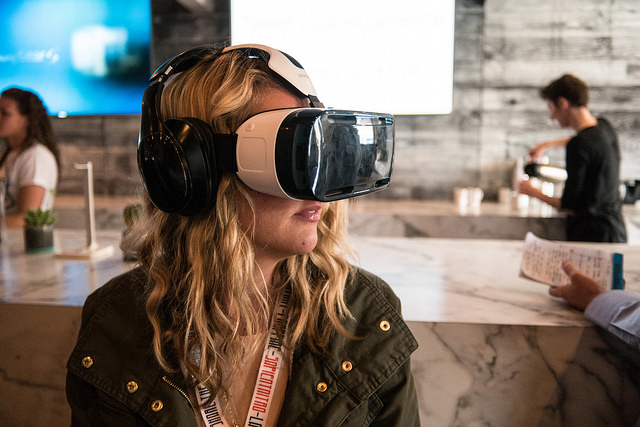Technology is constantly advancing and is currently part of almost every aspect of our life, to the point that today it has become an ally when training personnel for any type of industry, using mainly virtual reality or augmented reality.
VR Training
Virtual reality, also known as VR for its acronym in English, is a technology that allows the user to place themselves in the middle of scenes and real-looking environments generated by a computer, and that allow him through the use of special lenses, helmets, and other devices interact with those fictional scenarios.
Usually, the term virtual reality is associated with the video game or recreation environment, but believing that the capacity of this technology is limited only to these areas is a misconception.
In recent years, the training and training of personnel have been popularized using virtual reality simulations, especially in the industrial and military sectors, since it allows workers to prepare themselves to face risky situations in the labor field.
This type of training allows running simulations of possible real scenarios for which staff must be prepared, helping them to explore, understand and react physically and psychologically in a similar real situation.
In addition, virtual reality can be used for the interpretation or analysis of complex information, in a way that allows workers to visualize the data, as well as having a broader view of concepts or processes, which could not be observed directly in the real world due to the risks that it would imply for the staff.
As a virtual reality company, we have prepared an article where we highlight the benefits of this technology in different sectors of the industry.
Sectors that can Benefit
Virtual reality is a technology that only requires the necessary equipment and the design and programming of scenarios to adapt to almost any field, for this reason, the incidence of this system has been extended to all types of industries and work situations.
Schools
The possibilities of virtual reality as a teaching method are almost endless, both at school and university level, as it allows a greater understanding of concepts, systems and even of historical events or future possibilities. Developed countries with advanced educational programs have begun to include virtual reality as a tool available to their students, which will allow them to grow in terms of previous educational abilities. This method can be especially effective in careers such as architecture or engineering by allowing the student to visualize models of real structures, and even more effective in the field of medicine by allowing the human body and its internal systems to be observed.
Emergency Services
Emergency services are one of the fields where training and training of personnel through virtual reality can be more effective, helping to create more efficient systems with immediate responses and much more skilled workers when responding to a critical situation. In this sector, training can be applied to a wide variety of professions, which are necessary at the time of an emergency.
Firefighter candidates can benefit from this type of training, placing themselves in risk scenarios such as fires in buildings with a risk of demolition or rescue of people, helping them to know and master the correct way to proceed in those cases. Paramedics, nurses, and doctors will also be able to visualize extreme emergency situations where they are faced with different accident victims, allowing them to train their capacity for diagnosis and immediate action, preparing them for real scenarios.
But it is probably the police services that benefit most from training through virtual reality, since they may be participants in high-risk situations, training in gun handling, hostage rescue and negotiation with dangerous criminals, serving as training not only to proceed properly is these scenarios, but also to manage the stress levels to which they could be subjected.
Industry and Infrastructure
The areas of industry and infrastructure are one of the sectors that could benefit most significantly from employee training through the use of virtual reality, whether in the public or private sector.
Both the industries and infrastructure sectors are governed by complicated and demanding security systems, which must be fully complied to avoid accidents, but still, there are great risks in the development of work related to these divisions, due to the nature of his work.
That is why having a highly trained staff capable of controlling any risk situation and reacting to the most serious occupational accidents is essential for these industries.
In that sense, there is no better way to train staff than through the use of virtual reality, as it will allow them to participate in simulations where work and employee safety is compromised, whether due to system failures or external factors.
This kind of imaginary situation will allow workers to understand the risks of the industry and will provide them with the tools and knowledge necessary to face similar scenarios in the real world, educating them as to the most effective techniques to solve any problem that may arise.
The VR training will give industry personnel the ability to comply with basic training, know the techniques for the control of operational rooms, how to proceed in critical situations in conjunction with specialized personnel, and management of personnel and civilians in cases of risk. All this with the advantage of a safe and controlled environment that will allow workers to dominate their training area.
Maritime Industry
The maritime industry can also use training through the use of virtual reality, as it will allow staff to run simulations in which the safety of a vessel is compromised, allowing them to understand how their actions could affect the outcome of a critical situation.
The VR training will allow to control and verify the development of specific situations that could compromise the safety of personnel or civilians, and that can represent large losses of capital for the industry, will also help to avoid multiple incidents and support the security measures of industries and companies specialized in the maritime area.
Military Training
The international military industry has programs that specialize in training soldiers through virtual reality systems, simulating extreme situations where personal and civilian security is compromised, training them in the management of critical situations and preparing them for action in the field.
This type of training allows soldiers to know the risks of the field, and develop their response skills and the appropriate tactics to respond to each situation, also allows them to practice handling heavy weapons in a safe and controlled environment, without compromising safety.
Innovation Projects
Virtual reality has really variable uses as we have seen, however, its scope is not limited only to those we have broken down in this article, and thousands of innovation projects are carried out around the world with the use of VR. The development of new technologies in the area of agriculture, space training, the invention of new medical or construction techniques, all kinds of recreational applications, and many other fields are using virtual reality as a method of growth and training, taking the applications of VR beyond initially imaginable.
Advantages of training in virtual reality environments
The latest developments in virtual reality on a commercial level and the growing market of training simulators for industrial and emergency purposes have made virtual reality a great tool for learning.
Training with this type of virtual experience offers innumerable and very interesting possibilities when it comes to training in industrial and emergency services since this is one of the technologies that best suit the purposes of training in dangerous occupations and that has a large number of fields that can benefit from this type of simulation.
There are several advantages that allow you to achieve the teaching of the objectives in a satisfactory way since these are very similar to the advantages you have when using a computer running an interactive simulation in three dimensions.
While it can be recognized that a simulation is only a representation of real life, there are characteristics that can modify the experience and make it more similar to a specific situation.
Authentic and Relevant Scenarios
For example, simulation can provide authentic and relevant scenarios that make use of situations where users would be under pressure and would be forced to act as they would in real life. In this way, if you do not have the correct technique and lack practice, or if there are difficulties of some kind, you can repeat the event in question until the learning is completely satisfactory.
Workers who use this learning method should know that simulations allow for exploring new situations, making predictions of these, and designing new experiments or maneuvers when interpreting the results.
Virtual reality can more accurately illustrate some characteristics and processes than other media, being something really attractive to people since those who use this method are more motivated and pay more attention when experiencing exciting and challenging 3D industrial environments and their interaction in them, whether creating, moving or modifying virtual elements. The courses that can be done in VR offer greater participation and retention rates, achieving a connection with the content provided.
With this technology that encourages active participation rather than passivity, users who interact with the virtual environment are encouraged to continue working and learning since there is also the possibility of making new discoveries in them, using new perspectives and providing ideas and solutions, never done before.
They really feel they are in the middle of the training stage, being able to experience all the sights, sounds and emotions in a complete 360-degree world with vision and sound. In addition, VR allows the user to proceed and obtain learning at their own pace and basically from anywhere, allowing it to learn literally “doing” thanks to the new technologies that provide the experience through simulations. In our opinion, there are four major advantages that this type of training can offer to any company that wants its employees to learn through virtual reality. These are:
Costs reduction:
Training in virtual environments reduces the large costs associated with real-life simulations. For example, the resources used in the training of police and firefighters, as they must close roads and involve many people as actors to simulate dangerous scenarios. VR training makes it possible to teach any process at a minimum cost.
Safe scenarios:
Virtual environments make it possible to train with hazardous materials or dangerous situations without being in real danger. The lack of student experience can be a risk in some industries, such as those in which high-altitude work or handling hazardous materials are involved. VR-based simulations offer a safe environment where participants can train quietly.
Different scenarios in one place:
Trainees can enjoy learning in many different scenarios, simulating different conditions and without the need to move around. The difference between virtual reality scenarios and traditional simulations is the sense of immersion and realism offered by the former.
Personalized Training:
As we mentioned earlier, users can set their own training priorities and customize their sessions according to their preferences so that it goes at their own pace, allowing them to train whenever they want by simply accessing the computer and running the VR training simulation.
Conclusion
Simply put, the use of virtual reality for industrial training has so much potential because it offers the benefit of actually exploring an installation without having to be physically there. This means that training sessions can be carried out without the risk of interfering with the normal operations of the company. The technology needed to produce detailed 3D models of industrial facilities is already widely available, so it is normal for more companies to start taking advantage of them by putting their workers in VR situations.
It also solves a problem that coaches have been dealing with for a long time: the best way to learn the complexities of installation is to explore and experience it on its own, but doing so will not always be safe or practical. With VR, users will be able to explore it beforehand and when they are really there, they will have the confidence that they would not get otherwise.
The best thing about all this is that they won’t have to risk injuries to get that trust. If you are ready to take advantage of virtual reality, at the AppStudio agency we offer everything you need to start the learning process for your company.
